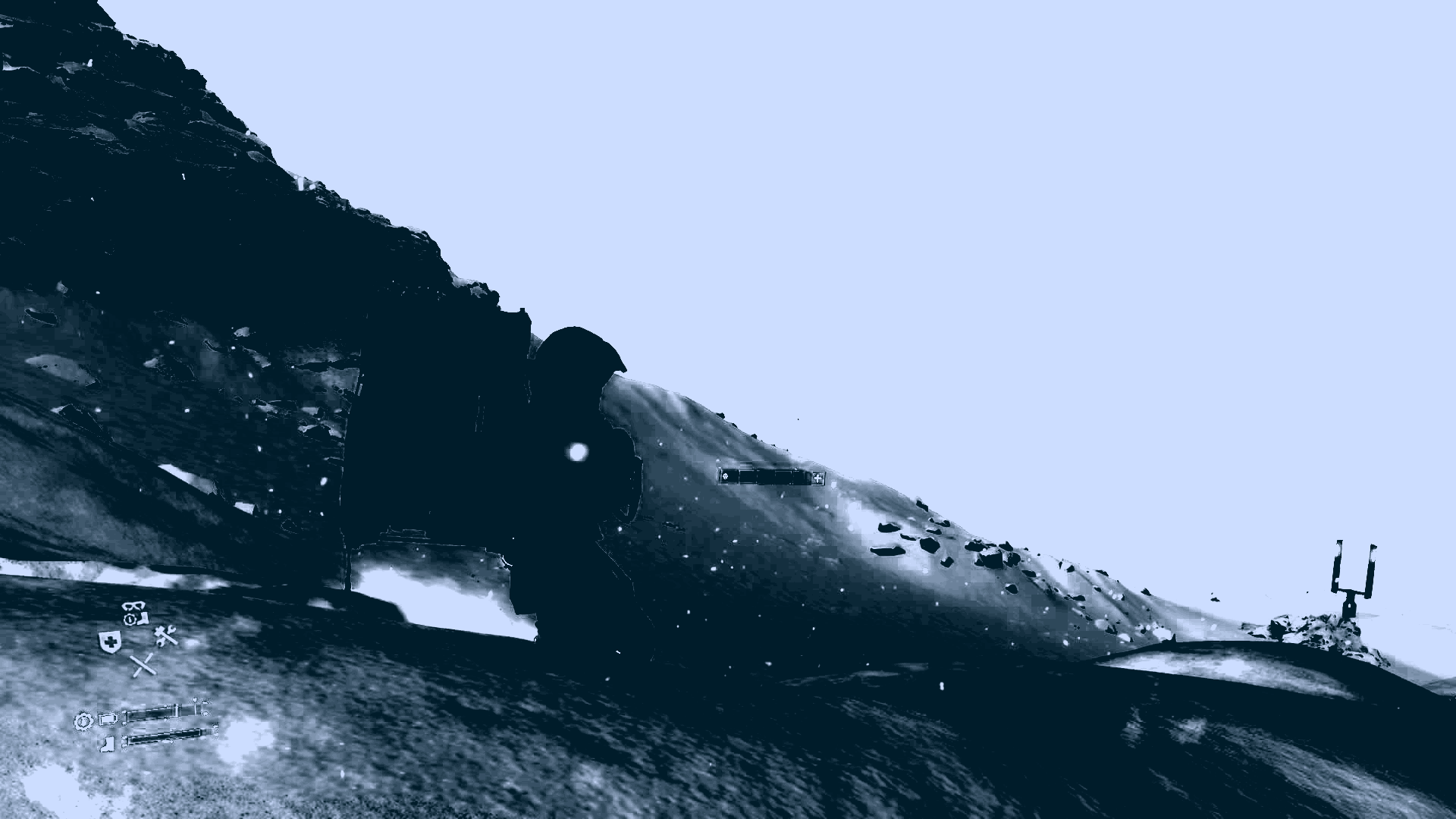
One common trope in adventure games is to separate the world, like the Earth, into different biomes. If you’ve come across a world completely underwater, and another world covered in lava, then it feels like a requirement for snow and ice to come not too long after. Think Banjo-Kazooie’s Hailfire Peaks level, or the many times Mario has traveled from desert, to jungle, to underwater lair. The change in environment not only provides a new landscape, but usually new game mechanics. Lava that does double damage, water that slows you.
Snow levels can be the hardest biomes to face in games because a bit of player control is relinquished to the powers of frictionless ice and blinding snow; The ability to simply run or jump is replaced by slipping and sliding. Meanwhile player vision might be heavily reduced thanks to severe snowstorms. It almost feels too corny to compare a harsh winter level to the pressures of real life, but if 2019 showed me anything, it’s that watching a fictional character overcome heaps of snow and ice makes me feel like I, too, can do it.
Kojima Productions’ Death Stranding is a bit outside of the adventure-game norm. Set in a post-apocalyptic United States, Death Stranding doesn’t really deal with multiple biomes. The world is mainly wet marsh and grassland, soaked by constant rain that ages everything it touches. But when it does deviate from this kind of setting, it moves into hazardous blizzards, icy mountains.
Admittedly, I almost didn’t finish Death Stranding. Even without ice and snow, it’s a demanding game that requires patience. The game’s protagonist, Sam Porter Bridges, is tasked with hauling deliveries across the country. While trucks and motorcycles are available, rocky terrain tends to make the trip almost impossible on anything but foot. Add to that the fact that Sam periodically comes across Beached Things (BTs), invisible creatures that will attack you if you get close enough. If he’s carrying too much, Sam can easily trip and fall (and drop everything he’s holding). If he goes into deep water, he will be carried by the current (and drop everything he’s holding). If BTs grab Sam, he’ll drop everything he’s holding. If terrorists kill him, he will die (and drop everything he’s holding). There’s a lot of chances for failure, and the addition of snow only increases them.
It wasn’t until I reached the snowy mountains that I came to understand and appreciate what Death Stranding was about. As the game makes painfully obvious, Sam is the bridge between the old and new United States. By delivering materials across the country, he’s also connecting everyone to a wireless communications network. He’s slowly linking a severed country and establishing a postal service. Yet, while Sam is carrying the weight alone in the game, the players who guide his actions are not. They can create bridges, ziplines, battery stations, and other buildings, all usable in other people’s games, to ease the long trek to each destination. Every building is created for everyone playing Death Stranding. Likewise, players can help others construct buildings by donating materials.
Player-assistance didn’t affect me until I reached the snow portion of the game. It was then that the camaraderie of helping others by either donating materials or making things myself helped temper the harshness of the terrain. I felt I could keep going, that I wasn’t entirely alone despite how lonely Sam looked and all the sad, moody music that accompanied him down his mountainous path.
Beyond the danger of snow and ice, winter is a hard season for many. The sun sets much sooner, the cold is painful, and the holiday season can be both stressful and depressing. 2019 was a difficult year for me, and as 2020 approached, I didn’t exactly feel the “new year, new me” mentality that is so often posted on social media. I would say, in fact, there’s nothing new about me. I’m firmly seated in my identity, what I want for myself, and what I don’t want for myself. 2019 was, for me, all the things I did not want to happen, happening all at once. It was me hauling a lot of trauma on my back, and having no place to deliver it. Winter, with all the difficulties the weather and holidays bring, is only a reminder that those things I carry are still on me. But 2019 was also the year I felt most supported by family, friends, and therapy. The help from others allowed me to live day by day, to find the small moments of peace and embrace them, because otherwise life will absolutely weigh you down.
Death Stranding’s snowy area was successful because it captured the emotional toll of cold, winter nights. It made the challenges of everyday life and the importance of loved ones’ assistance into game features. If Sam can walk up a mountain with a baby on his front, ten boxes on his back, and ghosts to his side, then I can at least try to work out my own problems. Sam is adamant about going alone; he was an outsider before and wishes to continue to be one after. But as the game progresses, he realizes how much he needs the help of others, NPCs and players travelling on their own path. Traversing alone up snowy mountain paths felt lonely, and almost impossibly difficult to overcome, but with support, hardship, like winter, can eventually end. And when the snow returns, we can hope that we are a little more prepared to endure it.
***
Shonté Murray-Daniels is a poet and games critic. You can find her on Twitter @Shonte_Writes.